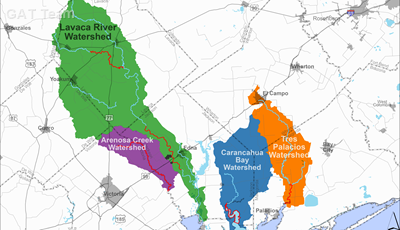The U.S. Environmental Protection Agency (EPA) has accepted the Carancahua Bay Watershed Protection Plan (WPP), published by the Texas Water Resources Institute (TWRI).
EPA accepted the plan as it meets the national guidelines for watershed-based plans and effectively outlines a strategy to improve the watershed, plan developers said.
Part of the Matagorda Bay system, the Carancahua Bay watershed covers 319 square miles in portions of Calhoun, Jackson, Wharton and Matagorda counties.
Carancahua Bay is impaired due to elevated levels of bacteria, and West Carancahua Creek is impaired due to depressed dissolved oxygen. High levels of bacteria can indicate an increased risk for recreational users to contract gastrointestinal illnesses and low levels of dissolved oxygen negatively impact fish and other aquatic organisms.
TWRI along with local stakeholders developed the WPP, which addresses these impairments. The Texas Commission on Environmental Quality (TCEQ) provided funding support for the plan.
In addition to the WPP, TWRI is working with TCEQ and stakeholders to develop a total maximum daily load to determine Carancahua Bay’s capacity to handle bacteria loads and still meet water quality standards.
“Voluntary efforts by local residents, soil and water conservation districts, local government and state agency representatives and many others led to a successful collaboration to develop the plan,” said Michael Schramm, a TWRI research specialist. “Stakeholders identified a number of voluntary management measures that if implemented according to schedule will help Carancahua Bay meet recreational water quality standards over the next ten years.”
“Some of the voluntary measures include repairing failing septic systems, restoring coastal wetlands and oyster habitat, improving grazing practices and increasing water quality-related education and outreach,” Schramm said.
Dr. John Tracy, TWRI director, said the institute is pleased with EPA’s acceptance of the plan.
“The plan sets forth an approach to improve resource stewardship that allows stakeholders to rely on watershed resources for their livelihood while also helping to restore the quality of its water resources,” Tracy said.
Now that the WPP is completed, TWRI is working with stakeholders to secure grant funding for implementing the plan. The institute recently secured grants to expand septic system and stormwater management education and outreach efforts within the watershed.
To download the WPP and for more information about the project, visit its website.



